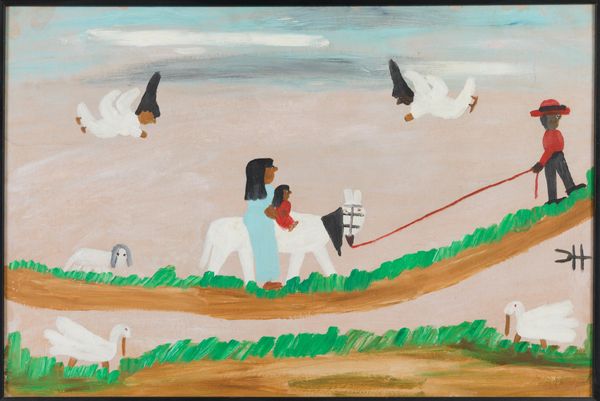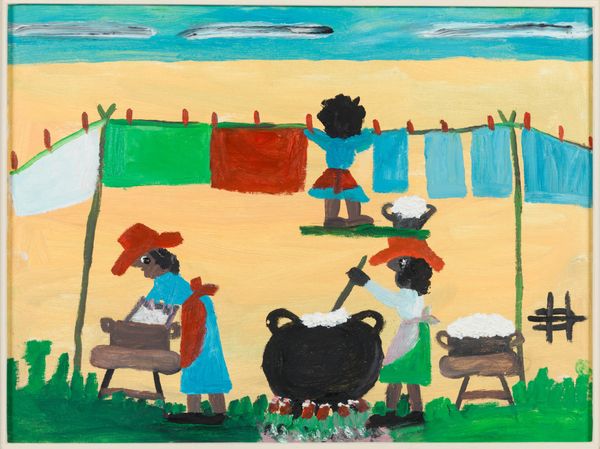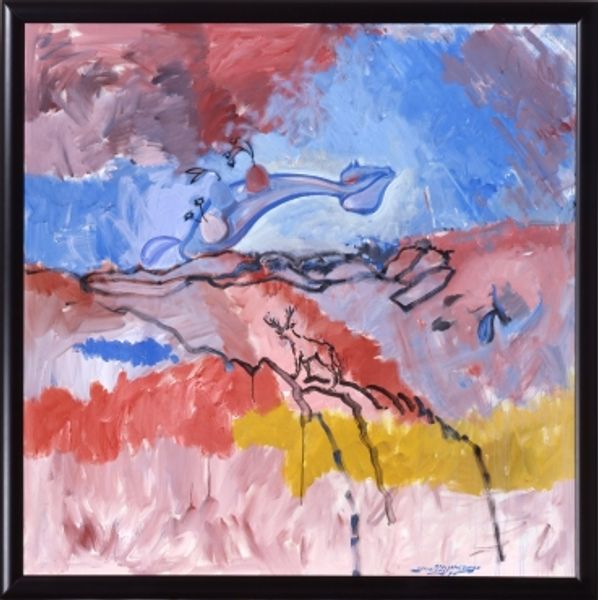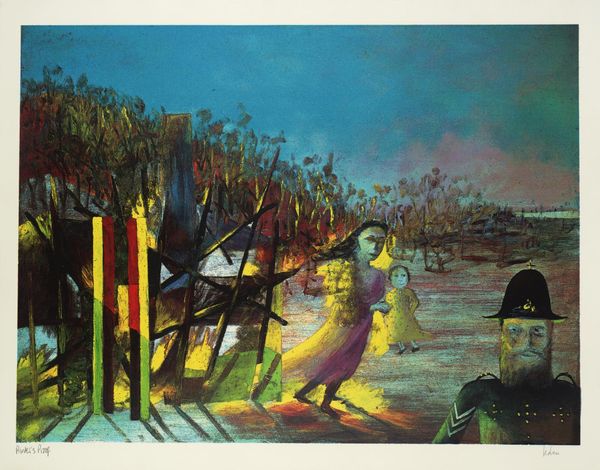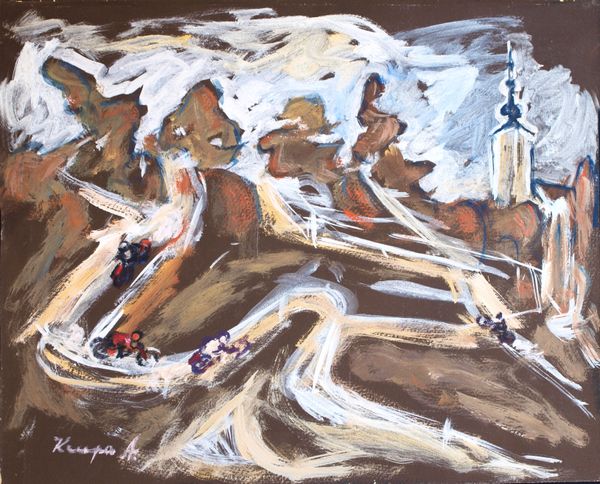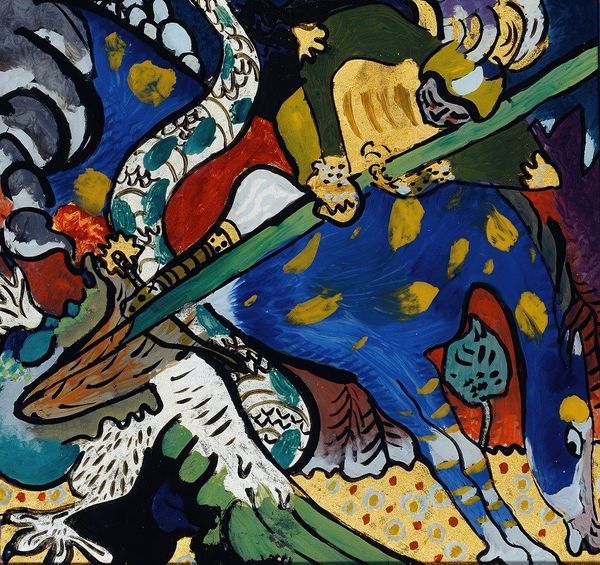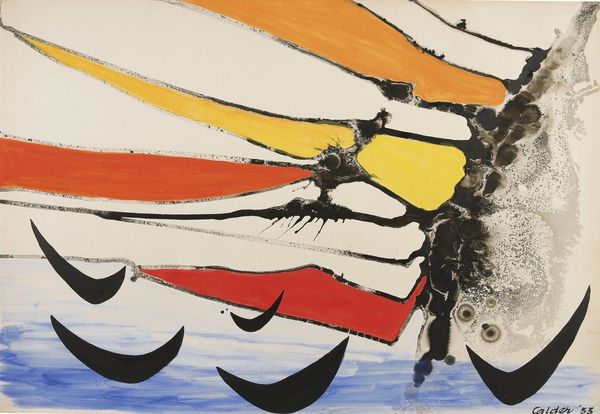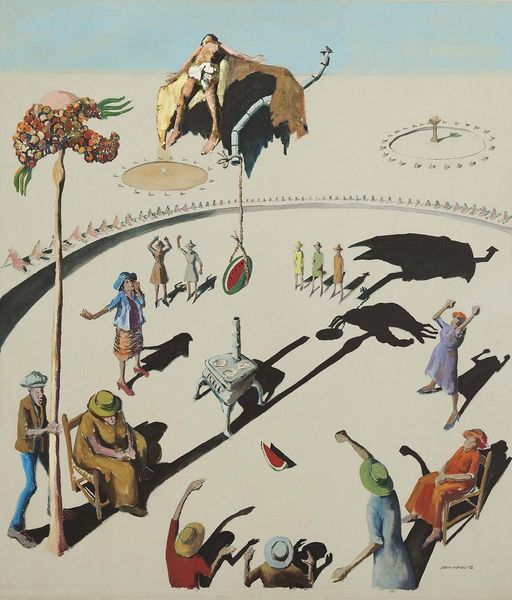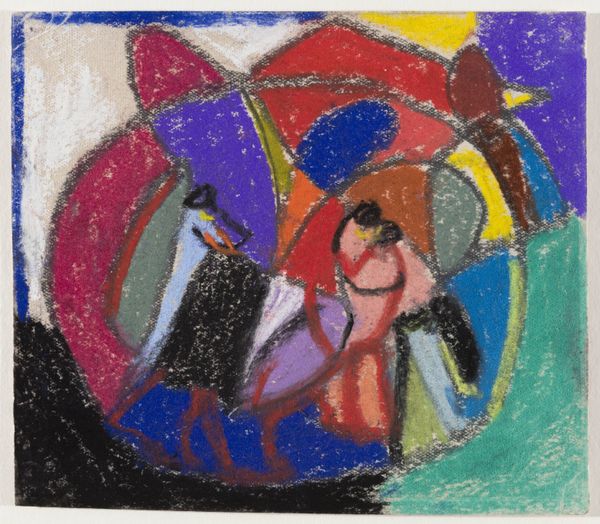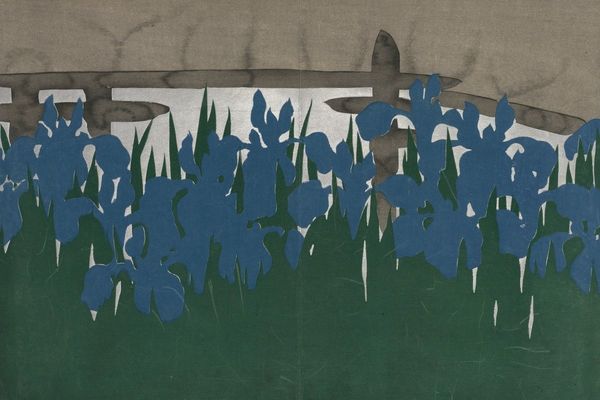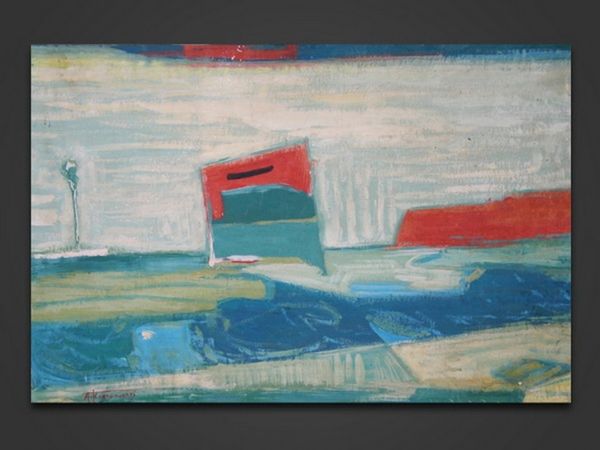
oil-paint, impasto
#
african-art
#
oil-paint
#
landscape
#
figuration
#
oil painting
#
impasto
#
naive art
#
genre-painting
Dimensions: 40.64 x 60.96 cm
Copyright: Clementine Hunter,Fair Use
Curator: Looking at this vibrant scene, it immediately evokes a sense of community and labor. Editor: Indeed. The oil painting titled "Fishing," created by Clementine Hunter in 1966, presents a bustling scene of several boats each carrying two figures actively fishing. The landscape elements are reduced to simplified forms of water, sky and what appears to be the edge of a marsh. Curator: The bold color palette and flattened perspective remind me of folk traditions, challenging notions of fine art. It evokes a complex discourse around race and the romanticized image of the rural South, doesn't it? Editor: Precisely. Her distinctive application of impasto provides each element a tactile quality. The focus seems to be less on the specific rendering of depth, or an elevated approach to her supplies, and more on presenting fishing as work, even in such calm surroundings. The boats, sky, water – these all seem to conform to her use of house paint from her employer. Curator: Absolutely. We must recognize that her practice reflects the material realities and limited resources available to her. The directness, for me, speaks to a narrative tradition of African American storytelling, passed down orally and visualized through her brush. It's vital we see her use of fishing not just as an individual act, but as tied to collective experiences, survival, and a deep connection to place. These activities reinforce ties. Editor: Hunter’s compositions certainly suggest those activities sustain the ties as much as providing basic sustenance, but I still cannot look away from the raw fact that the scene is composed primarily of accessible paint from the service she performed on the plantation. This gives context to how art may exist beyond just high societal aspirations of consumption. Curator: To step back, let us consider this in the intersectional scope: Clementine Hunter's folk art operates as resistance, a visual language created outside of formal academic structures. This genre painting becomes an important document of labor, resistance, and the everyday lives of Black people in the Jim Crow South. This isn't a detached observation but a passionate claiming of space and narrative. Editor: I agree entirely. I came seeking commentary on its simple construction, yet realize the beauty comes from a space born from struggle and material, accessible context.
Comments
No comments
Be the first to comment and join the conversation on the ultimate creative platform.
